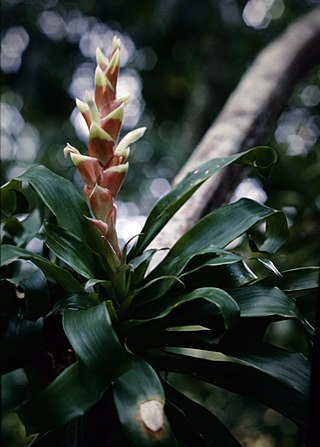
Lupinus polyphyllus, the large-leaved lupine, big-leaved lupine, many-leaved lupine, blue-pod lupine, or, primarily in cultivation, garden lupin, is a species of lupine (lupin) native to western North America from southern Alaska and British Columbia and western Wyoming, and south to Utah and California. It commonly grows along streams and creeks, preferring moist habitats.

Lupinus, commonly known as lupin, lupine, or regionally bluebonnet etc., is a genus of plants in the legume family Fabaceae. The genus includes over 199 species, with centers of diversity in North and South America. Smaller centers occur in North Africa and the Mediterranean. They are widely cultivated, both as a food source and as ornamental plants, but are invasive to some areas.

Carl Sigismund Kunth was a German botanist. He was also known as Karl Sigismund Kunth or anglicized as Charles Sigismund Kunth. He was one of the early systematic botanists who focused on studying the plants of the Americas. Kunth's notable contributions include the publication of Nova genera et species plantarum quas in peregrinatione ad plagam aequinoctialem orbis novi collegerunt Bonpland et Humboldt. This work spanned seven volumes and was published between 1815 and 1825.
Astragalus bidentatus is a species of plant in the family Fabaceae. It is found only in Ecuador in two locations in the south above the timberline in the Azuay and Cañar provinces. Its natural habitat is subtropical or tropical high-altitude grassland. No specimens have been taken since 1945 and none are contained in museums. It is most commonly found in the month of July.
Lupinus kunthii is a species of legume in the family Fabaceae. It is endemic to Ecuador. Its natural habitat is subtropical or tropical high-altitude grassland.
Dendrophorbium scytophyllum is a species of flowering plant in the family Asteraceae. It is found only in Ecuador. Its natural habitat is subtropical or tropical moist montane forests. It is threatened by habitat loss.
Neottia smithiana is a species of flowering plant in the family Orchidaceae. It is endemic to China.
Alchemilla rupestris, synonym Lachemilla rupestris, is a species of plant in the family Rosaceae. It is endemic to Ecuador. Alchemilla rupestris has lateral segments of leaves with yellow-brown membranaceous basal stipules on it. The flowers have 2-4 carpels that are 2.5-3 mm long.
Amphibolis antarctica is a species of flowering plant in the family Cymodoceaceae. It is referred to by the common names wire weed or sea nymph, and is a seagrass found in coastal waters of southern and western Australia.

Ambrosina is a genus in the family Araceae that consists of only one species, Ambrosina bassii, and the only genus in the tribe Ambrosineae. This species is the smallest aroid in the Mediterranean, growing only to 8 cm tall. It is usually found growing in woodlands on north faces of hillsides and in humus soil that is covering limestone. It is distributed in Sardinia, Corsica, Sicily, southern mainland Italy, Tunisia, and Algeria.
Reynaudia is a genus of plants in the grass family. The only known species is Reynaudia filiformis, native to the Greater Antilles.

Lupinus saxosus is a species of lupine known by the common name rock lupine. It is certainly native to eastern Washington, eastern Oregon, and the northeast corner of California,where it grows in sagebrush and other habitat. It may also be native to Idaho and Nevada.

Tillandsia heliconioides is a plant species in the genus Tillandsia. This species is native to Mexico, Central America and South America.
Croton ferrugineus, synonym Croton elegans, is a flowering plant species in the family Euphorbiaceae native from western South America to northern Brazil.

Leuenbergeria bleo, formerly Pereskia bleo, is a leafy cactus, native to the shady, moist forests of Central America, that grows to a woody, prickly shrub about 2 m tall with large, orange flowers resembling rose blossoms.

Lupinus elegans is a species of flowering plant in the legume family known by the common names elegant lupine and Mexican lupine. It is native to Mexico and Guatemala.
Cyperus multifolius is a species of sedge that is native to Central America and northern South America.
Lupinus jaimehintonianus, commonly known as chepil de la lluvia in Spanish, is a species of lupine that is native to southwest Mexico.
Lupinus albert-smithianus is a species of lupine that is native to Peru. It is a non-climbing shrub.







